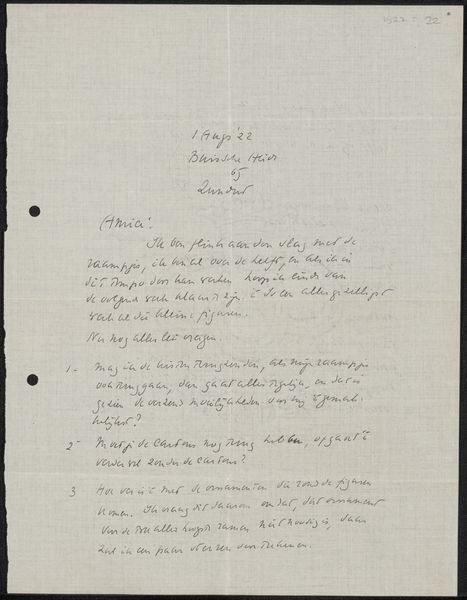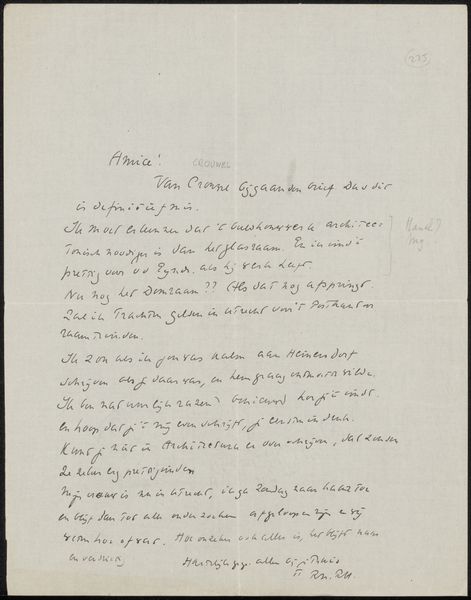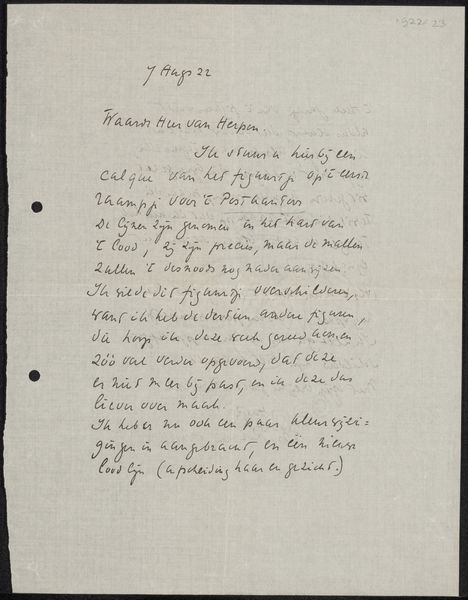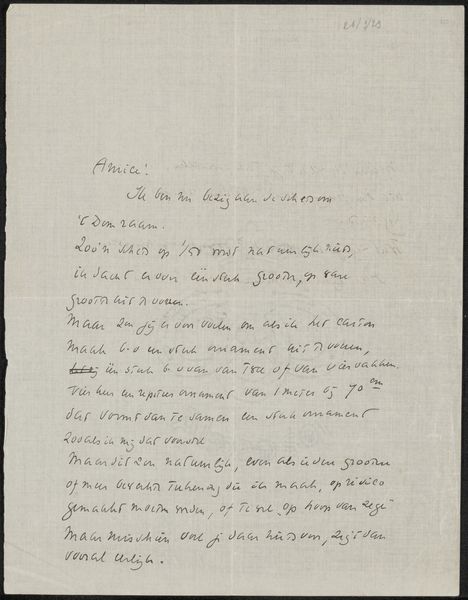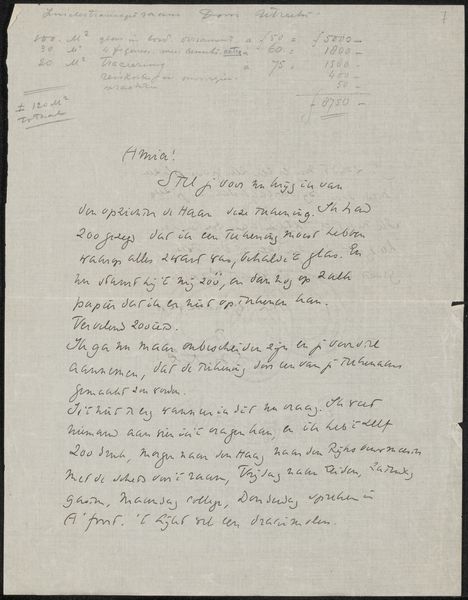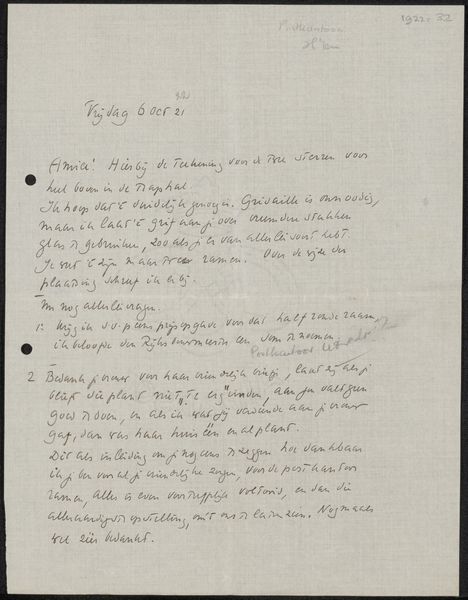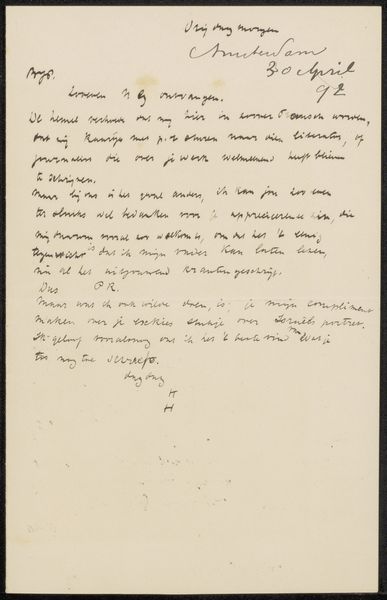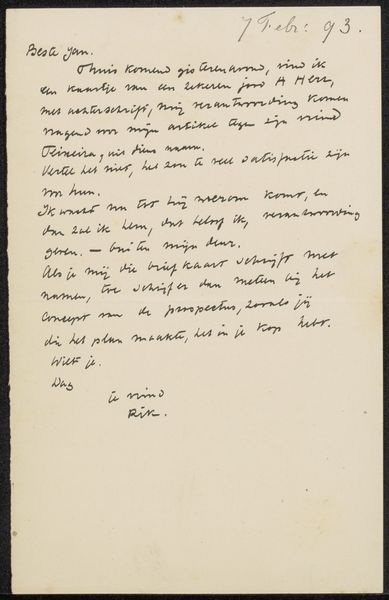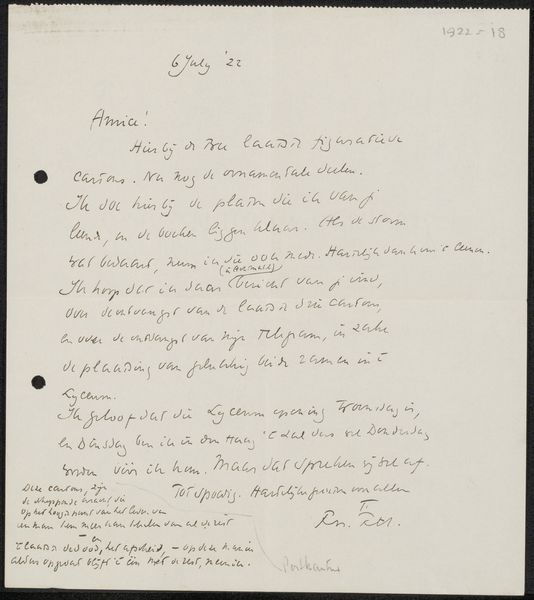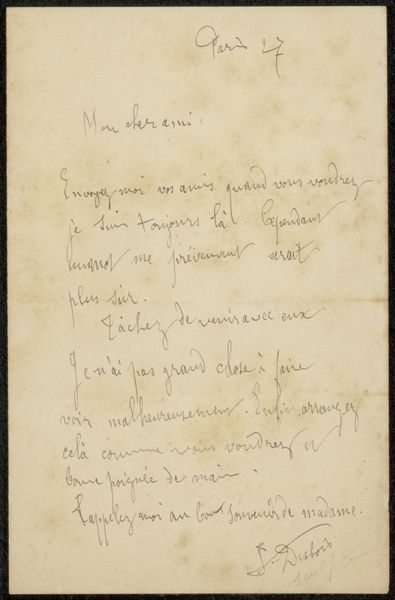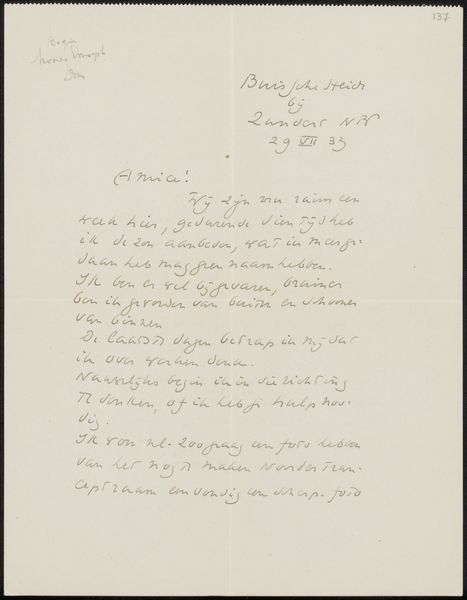
drawing, paper, ink, pen
#
portrait
#
drawing
#
ink paper printed
#
hand drawn type
#
paper
#
ink
#
pen
#
calligraphy
Copyright: Rijks Museum: Open Domain
Curator: Standing before us is "Brief aan Willem Bogtman," a fascinating piece attributed to Richard Nicolaüs Roland Holst, likely created between 1922 and 1932. Editor: It strikes me as incredibly intimate. The handwritten text, the visible fibers of the paper – it all suggests a very personal exchange. Almost melancholic, would you agree? Curator: Indeed. Holst was known for his calligraphic style, and you see it wonderfully displayed here. Notice the materials – ink, pen, and paper. This piece exemplifies how crucial materiality is. The ink bleeds and pools, it has an almost organic feel. It grounds the work, emphasizing the physical labor involved in creating such correspondence. It really bridges the gap between writing and image-making. Editor: It’s intriguing to think about this letter in its original context. Who was Willem Bogtman, and what role did he play in Holst's life? Was he a patron, a colleague? Such factors definitely impacted its creation, its aesthetic and its message. These letters served not only practical function but served a broader, deeper social role for people of the time. Curator: Exactly. Think about the implied social context of correspondence in the early 20th century, when handwriting still held immense importance. Each stroke, each carefully formed word carries the weight of Holst's intentions and emotions, quite separate from printed documents from the period. Editor: The letter serves as both a material object, carefully produced, and as a historical document, reflecting the social relations of its time. It is a record of Holst and Bogtman and something of an insight of their thoughts to each other. It is just full of the texture of their shared life. Curator: Absolutely, and its current placement in the Rijksmuseum speaks volumes. Its journey from private correspondence to a public artifact significantly alters its meaning and purpose. Editor: Indeed, a simple handwritten message now enshrined, in its own right, as something monumental in society's collections of prized heritage! Curator: Reflecting on "Brief aan Willem Bogtman" has certainly illuminated the tangible artistry of communication during that period. Editor: And considering the historical and social framework adds another layer to our understanding of art’s relationship to personal exchange.
Comments
No comments
Be the first to comment and join the conversation on the ultimate creative platform.
